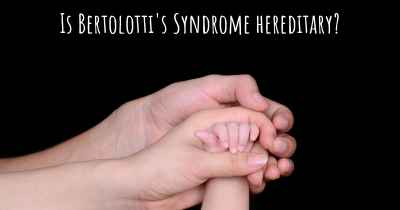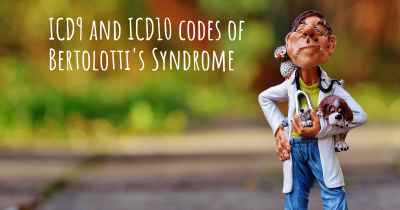What is the history of Bertolotti's Syndrome?
When was Bertolotti's Syndrome discovered? What is the story of this discovery? Was it coincidence or not?

Bertolotti's Syndrome, also known as lumbosacral transitional vertebra (LSTV), is a congenital anatomical variation of the lumbosacral spine. It was first described by Dr. Mario Bertolotti, an Italian radiologist, in 1984. This condition is characterized by the presence of an enlarged transverse process on the last lumbar vertebra, which may articulate or fuse with the sacrum or ilium.
The history of Bertolotti's Syndrome can be traced back to the early 20th century when anatomists and radiologists began studying the variations in the lumbosacral spine. However, it was not until Dr. Bertolotti's groundbreaking research that this specific anatomical variation was identified and named.
Dr. Bertolotti conducted extensive studies using radiographic imaging techniques to identify and classify the different types of lumbosacral transitional vertebrae. He observed that the enlarged transverse process in the last lumbar vertebra could cause various symptoms, including low back pain, sciatica, and sacroiliac joint dysfunction.
Since its initial discovery, Bertolotti's Syndrome has been a subject of debate and controversy among medical professionals. Some experts argue that the presence of a lumbosacral transitional vertebra is merely an anatomical variation without clinical significance, while others believe it can be a potential source of chronic low back pain.
Over the years, numerous studies have been conducted to investigate the prevalence, clinical significance, and treatment options for Bertolotti's Syndrome. These studies have provided valuable insights into the condition, helping to refine its classification and improve diagnostic techniques.
One of the key challenges in understanding Bertolotti's Syndrome is its association with low back pain. While some individuals with this anatomical variation may experience chronic pain, others may remain asymptomatic. This has led to ongoing discussions regarding the causal relationship between the transitional vertebra and the development of symptoms.
Despite the controversies, several treatment options have been proposed for managing Bertolotti's Syndrome. These include conservative approaches such as physical therapy, pain management, and activity modification. In more severe cases, surgical interventions like resection of the transitional vertebra or spinal fusion may be considered.
As research continues, the understanding of Bertolotti's Syndrome is evolving. New imaging techniques, such as magnetic resonance imaging (MRI), have provided greater clarity in visualizing the anatomical variations and their potential impact on adjacent structures. Additionally, advancements in genetic studies have shed light on the genetic factors that may contribute to the development of lumbosacral transitional vertebrae.
In conclusion, Bertolotti's Syndrome is a congenital anatomical variation of the lumbosacral spine characterized by an enlarged transverse process on the last lumbar vertebra. It was first described by Dr. Mario Bertolotti in 1984. The condition has been a subject of debate among medical professionals, with ongoing discussions regarding its clinical significance and association with low back pain. While treatment options exist, further research is needed to fully understand the condition and optimize management strategies.








